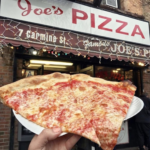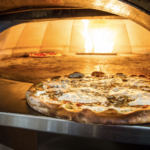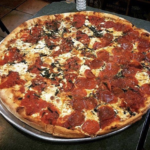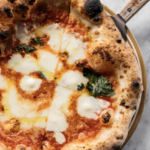Una Pizza Napoletana – NYC
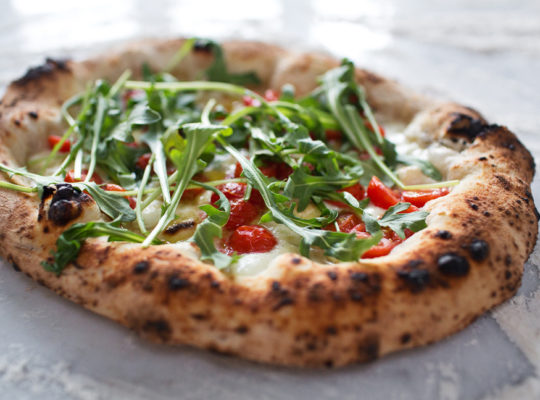
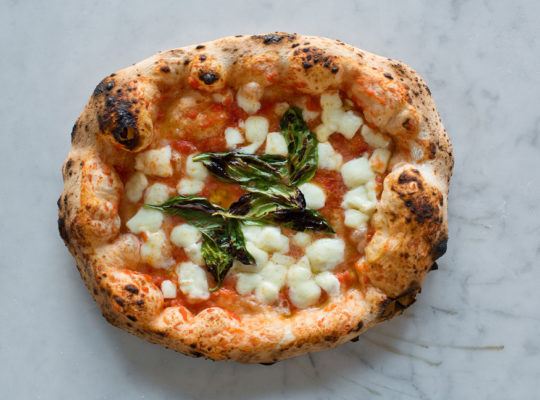
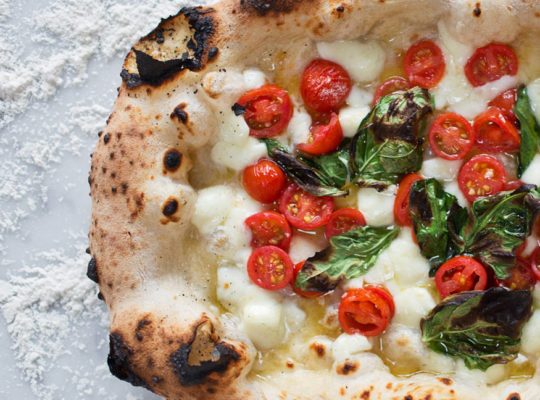
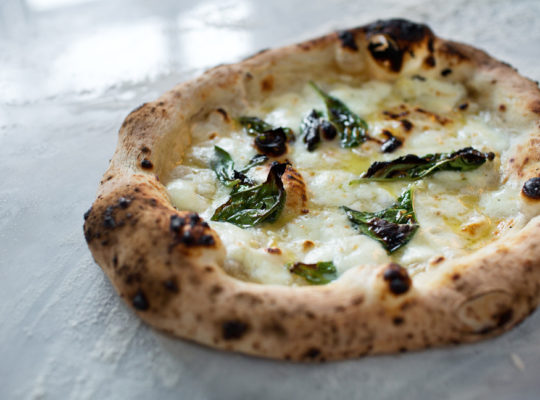
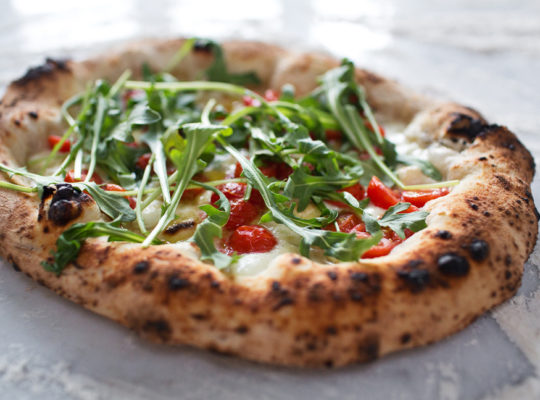
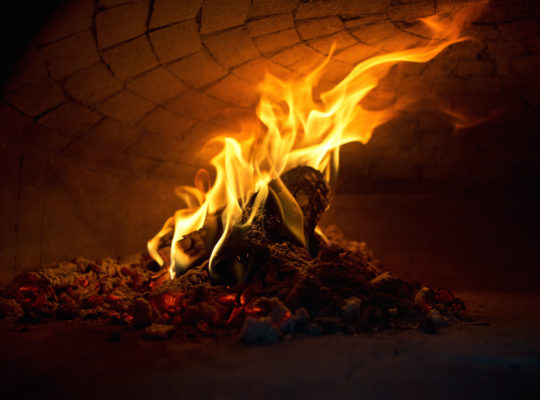
Business Information
Opening Hours
| Monday |
|
|---|---|
| Tuesday |
|
| Wednesday |
|
| Thursday |
|
| Friday |
|
| Saturday |
|
| Sunday | Closed |
Pizza Style
Price Range
Amenities
-
Delivery: No
-
Takeout: No
-
Reservations: Yes
-
Electronic Payments: Credit Cards, Debit Cards
-
Wifi: No
-
Good for: Dinner
-
Good for kids: No
-
Gender neutral bathrooms: Yes
-
Bike friendly: Yes
-
Outdoor seating: No
-
Catering: No
-
Parking: On street
-
Alcohol: Beer and Wine only
-
Noise level: Average
-
Good for groups: Yes
-
Pet friendly: No
-
Indoor seating: Yes
-
Ambience: Romantic, Special occasion
About Una Pizza Napoletana – NYC
Four nights a week, Anthony Mangieri creates what many consider among the best pizza in America at Una Pizza Napoletana, a nondescript, spartan restaurant carved out of a San Francisco auto garage South of Market.
Mangieri’s routine begins when he comes to the restaurant every morning, usually alone, sometimes accompanied by his wife and infant daughter. An avid cyclist, he often rides a bike or scooter from his Sausalito home. Once he arrives, he turns up the music high – jazz on one day, maybe Italian opera another – and creates the dough in a tiny room, unadorned save for a crucifix. The dough is a three-day process, unrefrigerated and naturally leavened.
That night, Mangieri will offer the same five pizzas as he did the day before, and as he will tomorrow. For two decades, Mangieri, 41, often clad in a worn baseball cap and T-shirt, has done the same thing every day, though he’s added a pie or two since moving his restaurant from New York to the Bay Area a little over two years ago. When he runs out of dough, he closes for the night.
It’s a constant pursuit of perfection. It’s blue-collar repetition. It’s “Groundhog Day” in a pizzeria setting. Some might assume that boredom would set in, but Mangieri sees the process differently, full of creativity and continuously challenging.
“I’m always changing things here, even though it’s always been the same idea. Basically the dough is different every single day,” Mangieri says.
For a forum with so few ingredients – flour, mozzarella, olive oil, tomatoes – the variables are constantly changing, rendering his pizza-making an infinite dance, an unending riff. The temperature and air fluctuate daily; the fire is a living being. The dough itself continues to evolve, even over the course of dinner service.
“The more specialized you get and the more you try to do one thing excellently, the more you realize it’s really, really hard.”
When it comes to the Zen-like repetition of his craft, Mangieri hearkens to a maxim of one of his cohorts, Arizona pizza maker Chris Bianco: Anyone can make one great pizza; make 100 great pizzas every night, week after week, year after year, and then you start to get to a place that people can’t duplicate.
“I always think of John Coltrane. I’m not comparing myself to him at all, but in a sense that it’s a guy that went through many phases of his art or whatever he was doing,” Mangieri says. “It’s not like all of a sudden he decided to abandon chord change. He learned and built and built and then found freedom through all the learning and practice.
“It’s the same with anything. Trying to be dedicated and sticking with it. This is what you do; this is what you should be doing.”
Mangieri’s dharma has always been to be a pizza man.
Growing up in New Jersey, he was a kid obsessed with Italy, skateboarding and punk rock, but he wanted to be a jazzman, even trying out for the musicians union in Atlantic City. But, as he puts it, he stank.
So he followed his passion for food, first settling for opening a bakery. His mom would drive him to the bakery at 10 p.m. and he’d work until 2 p.m. the next day.
“I just had an oven and that was it,” he says. “I mixed everything by hand. … I’d be lucky if we made 100 bucks.”
When he opened a seaside pizzeria in New Jersey’s Point Pleasant Beach, Neapolitan pizza was an unknown in America. He bought Caputo flour – a specialty Italian flour used for pizza – from a guy selling it from the trunk of a car, because that was the only way to get it in the United States; nowadays, the same flour is available at Safeway.
“When we were starting out, people didn’t even know what the hell Neapolitan pizza was,” Mangieri laughs. “The only place people ever saw the word ‘Neapolitan’ was that box of ice cream. Vanilla, chocolate and strawberry.”
In 2004, he moved the pizzeria to Manhattan, quickly rising to cult hero status thanks to a combination of big-city media coverage and word of mouth. He also gained a reputation for uncompromising, even harsh, customer service – a stigma he says is now unfair and outdated, but has been hard to escape.
In 2009, he closed the restaurant to move to San Francisco, a place he says he’s always loved (with the cycling to match). He opened the San Francisco location in 2010.
Awash in tattoos and strong opinions, with his cap pulled low, Mangieri can seem imposing. But he’s an engaging, charismatic figure, joking constantly as his Jersey accent pops up between tales of Naples lore and his own self-deprecating misadventures.
Age and parenthood have mellowed him, he says, as has the more relaxed California environment. He created a pizza named after his wife, Ilaria; and on Saturdays has added a sixth pizza, Apollonia, named after his daughter. He tops it with an egg, because Apollonia eats an egg every day. The eggs come from Cotati’s Alder Lane Farm, which Mangieri procures via barter.
When the SoMa location opened, people lined up for hours, but Mangieri knew that would subside.
“Dude, there are nights in here now when we’re just standing here doing nothing and people call, all in a panic and ask how long is the wait,” he laughs. “And we’re like, there’s two customers!”
With only five pies, a handful of drinks, and three people working every night, the economics of the restaurant are simple: A slow night is OK only if it’s followed by a busy one.
Criticisms that the $20 pizzas are too expensive upset him, citing his ingredients, experience and the proliferation of $20 entrees around town. And yes, for those who keep suggesting it, he has thought about adding a salad or dessert to the menu, but just can’t.
“I could call the produce company and have them bring a box of mixed greens, local whatever, and throw some tomatoes, sliced cheese and olives on it and charge 10 bucks. I bet you if we did 120 pizzas last night, we’d have sold 80 salads. Eighty salads, 10 bucks each, four nights a week. That’s 3,000 bucks a week extra.
“I’m not doing it, because it’s not the right thing.”
Sometimes, he says, the mental stress of pushing, not to mention the physical toll of breathing flour and smoke for 20 years, gets to him.
“There have been many nights when things have gone bad and I just want to go home and eat an ice cream,” he says.
Yet his passion and dedication bring him back. With the proliferation of cookie-cutter pizzerias as an example, Mangieri sees a dilution of what he calls “the truth.”
“It’s so easy to get all the information, to buy the mixer, buy the oven, buy the flour. It takes away people’s commitment to really learn.
“There’s no growth. There’s no time spent in things. There’s no becoming a part of something.
“The secret to all this, and what makes it really magical, is such small nuance that you can’t be taught in a week,” he continues. “If you’re in the zone, it’s like an improvisation of music. There are these moment you can’t fake; when that happens, the pizza can be beyond.”
–Paolo Lucchesi, San Francisco Chronicle, 1/7/2013

